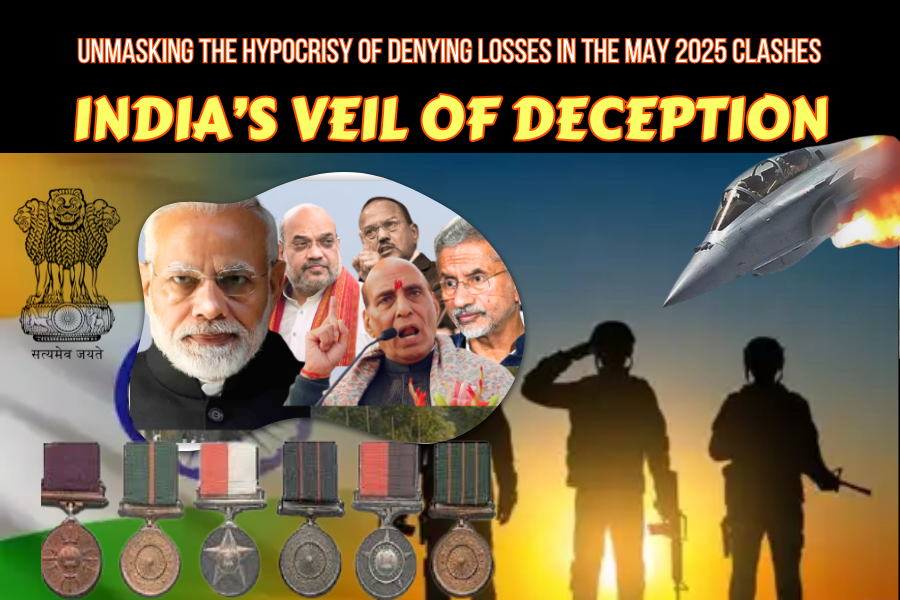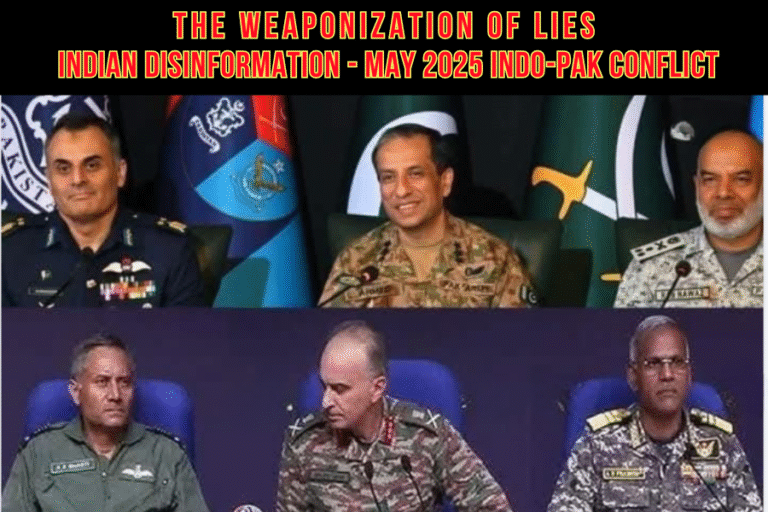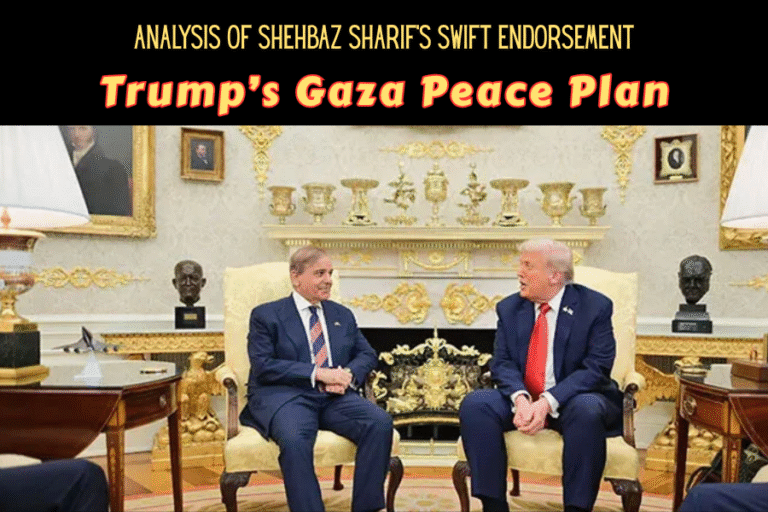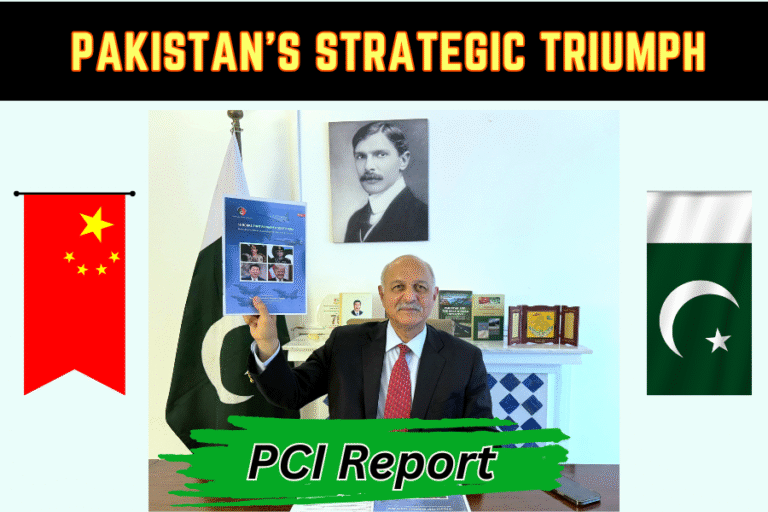(By Khalid Masood)
In the aftermath of the May 2025 Indo-Pakistani clashes, sparked by the 22 April Pahalgam attack, the Indian government, military high command, and media orchestrated a concerted campaign to deny significant military losses, particularly among Indian Air Force (IAF) pilots and assets like the Rafale jets and S-400 air defence systems. The recent decision to confer posthumous gallantry awards on over 100 Indian Army and IAF personnel, including four Rafale pilots, starkly contradicts this initial narrative of invincibility. This article exposes the Indian establishment’s pattern of deception, analyses the strategic and diplomatic consequences, and questions the credibility India can claim on the global stage, drawing on open-source reports, social media sentiment, and geopolitical analyses.
I. The Initial Denial: A Chorus of Defiance
Following Operation Sindoor (7–10 May 2025), India’s retaliatory strikes against alleged terrorist infrastructure in Pakistan and Pakistan-administered Kashmir, the Indian government and military vehemently denied significant losses. The Pahalgam attack, which killed 26 civilians in Jammu and Kashmir, prompted India to launch missile and air strikes, claiming precision hits on Jaish-e-Mohammed and Lashkar-e-Taiba facilities without targeting Pakistani military or civilian assets. Indian Air Marshal Awadhesh Kumar Bharti, Director General of Air Operations, asserted on 8 May that “all our pilots are back home” and avoided confirming losses, citing operational security. The Indian media, including The Times of India and India Today, echoed this narrative, celebrating Operation Sindoor as a decisive blow while dismissing Pakistani claims of downing five Indian jets, including three Rafales, as “propaganda”.

Pakistan’s military, in contrast, provided detailed accounts, claiming its J-10C & JF-17 jets, armed with PL-15E missiles, downed six Indian aircraft—four Rafales, one MiG-29, and one Mirage 2000—during the night of 6-7 May 2025. Visual evidence, including wreckage near Bathinda showing a Rafale’s BS-001 tail number and a MICA missile launcher, corroborated Pakistan’s claims. The Washington Post verified debris consistent with at least two French-made jets (a Rafale and a Mirage 2000) and identified a third crash site in Akhnoor. Despite this, Indian officials, including Prime Minister Narendra Modi, maintained that no significant losses occurred, with The Indian Express reporting on 19 May that casualty details were withheld to avoid aiding the “adversary”.
The Indian military also denied damage to its S-400 AD systems, with The Hindu claiming on 9 May that Pakistan’s drone and missile attacks caused “minimal impact” on Indian airbases like Adampur. Social media posts from Pakistan, however, claimed the death of five S-400 operators and severe damage to various IAF airfields, claims supported by Reuters and The Diplomat reports of significant Indian losses. This unified front of denial, amplified by India’s “Godi Media,” sought to project strength, aligning with the Doval Doctrine’s emphasis on narrative control.
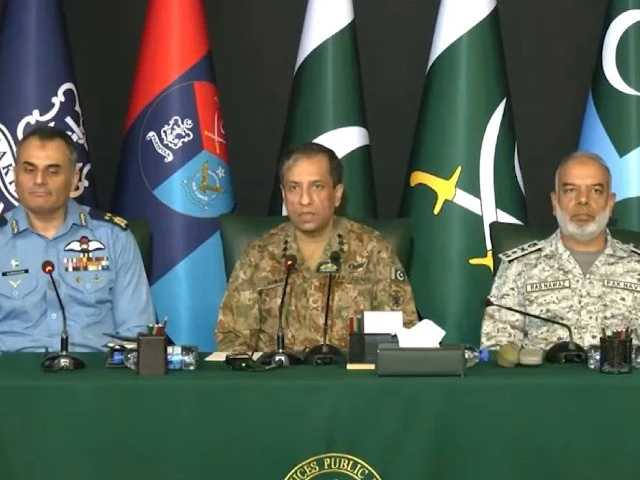
II. The Gallantry Awards: An Inconvenient Truth
On 6 July 2025, the Indian government announced posthumous gallantry awards for over 100 Army and IAF personnel, including four Rafale pilots and several S-400 operators, killed during the May clashes. This decision, reported by The Wire and The Indian Express, marked a dramatic reversal, contradicting earlier claims of minimal losses. The awards, intended to honour “valour” in Operation Sindoor, inadvertently confirmed Pakistan’s assertions of downing multiple jets and inflicting significant casualties, estimated by Pakistani sources at 250 soldiers, including seven IAF personnel.
The announcement followed domestic pressure, notably after Indian Navy Captain Shiv Kumar’s remarks at a June 2025 seminar in Indonesia, where he admitted that political constraints—imposed by Modi’s government—prevented strikes on Pakistani military targets, leading to IAF losses. Kumar’s statement, reported by Hindustan Times, described the operation as a “costly misadventure,” with India losing three Rafales, one MiG-29, and one Su-30MKI, aligning with Pakistan’s claims. The opposition, led by figures like Pawan Khera, seized on this, accusing Modi of misleading the nation. Pakistani social media posts celebrated the awards as India’s “quiet admission” of defeat, exposing its initial cover-up.
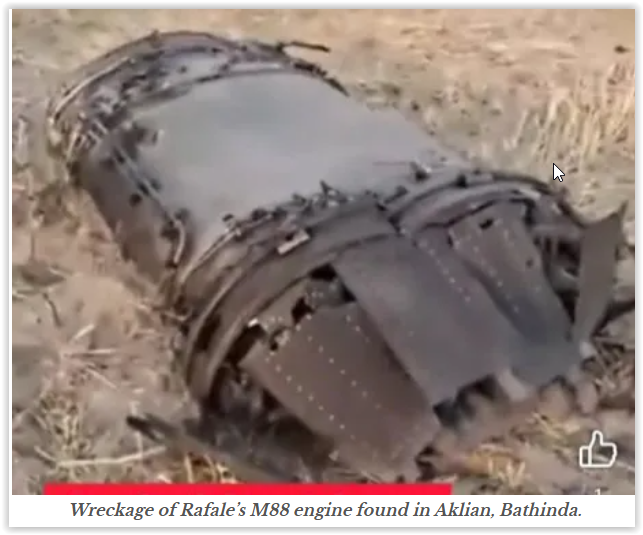
III. Why India Denied Losses: A Pattern of Deception
India’s refusal to acknowledge losses stems from strategic, political, and cultural factors, each undermining its credibility:
- Strategic Narrative Control: The Doval Doctrine, articulated by NSA Ajit Doval in 2014, prioritises information warfare to project India as a regional hegemon. Admitting losses would weaken this image, especially after the 2019 Balakot strike, where India’s claims of success were debunked by satellite imagery. By denying Rafale and S-400 losses, India aimed to maintain the myth of military superiority, despite evidence from Reuters and CNN confirming downed jets.
- Domestic Politics: Modi’s Hindutva-driven government relies on nationalist rhetoric to bolster BJP support. Acknowledging losses risks exposing vulnerabilities, as seen in the 2019 capture of Wing Commander Abhinandan Varthaman, which Pakistan publicised while India awarded him a gallantry medal. The May 2025 denial, followed by awards, reflects a similar attempt to spin defeat into heroism, as critiqued by The Wire.
- Military Pride: The IAF’s Rafale jets, acquired for $8.7 billion, were touted as “game-changers.” Admitting their loss to Pakistan’s J-10Cs, costing $50 million each, would embarrass India and Dassault Aviation, as noted by analyst Gilles Boquerat. The S-400, a $5.4 billion AD system, was similarly hyped, yet Pakistani claims of its neutralisation highlight India’s overreliance on unintegrated foreign systems.
- Global Image: India’s denial aligns with its ambition to be a global power, as seen in its QUAD and BRICS engagements. Admitting losses to Pakistan, a smaller economy, risks undermining this, especially after the G7 and SCO refused to endorse India’s Pahalgam narrative.
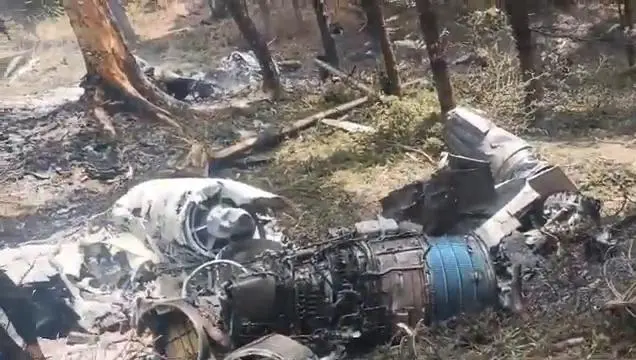
IV. The Cost of Hypocrisy: Global and Domestic Fallout
India’s deception has eroded its credibility:
- Diplomatic Isolation: The international community, including the US, China, and Russia, rejected India’s unproven claims of Pakistani involvement in Pahalgam, with The Guardian noting India’s reliance on disinformation. The U.S.-mediated ceasefire on 11 May, reported by BBC, favoured Pakistan’s call for a neutral probe, exposing India’s weak evidence. The Diplomat described Pakistan as “emboldened,” unified by the conflict.
- Domestic Dissent: The gallantry awards sparked outrage, with opposition leaders like Robert Vadra calling for transparency. Social media posts accused Modi of “evasion of accountability”. The Wire highlighted the contradiction between Modi’s “full operational freedom” rhetoric and Kumar’s admission of political constraints.
- Military Morale: The IAF’s losses, including Rafales and S-400 operators, exposed operational flaws. Le Monde and Asia Times noted India’s underestimation of Pakistan’s J-10C, JF-17 and PL-15E capabilities, with Reuters confirming at least two jets downed by Chinese systems. Bharat Karnad’s critique on Security Wise slammed the IAF’s lack of integration and poor pilot training.
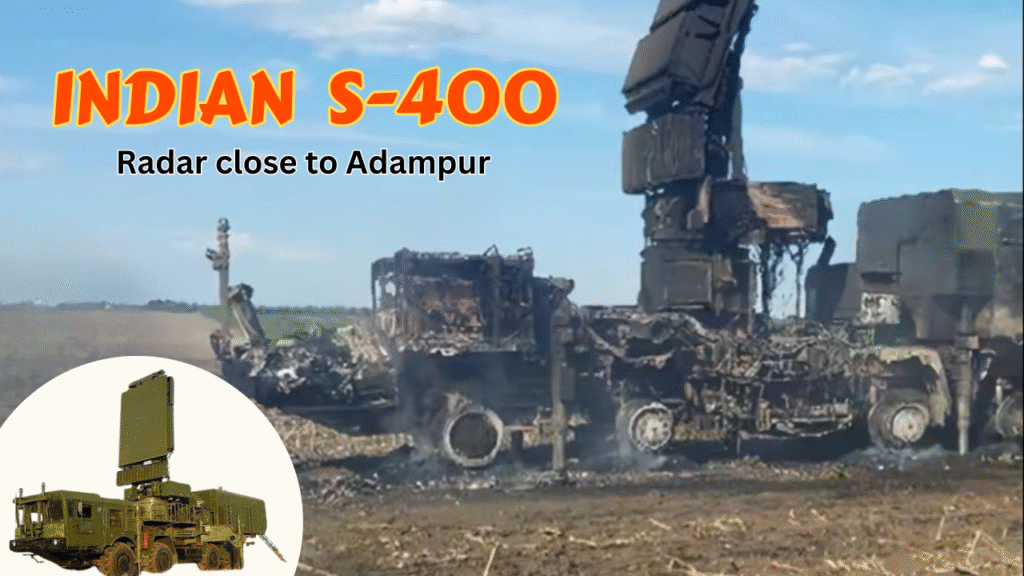
V. Pakistan’s Triumph: Exposing India’s Facade
Pakistan’s response, led by Prime Minister Shehbaz Sharif and General (Now Field Marshal) Asim Munir, showcased strategic and diplomatic acumen. The Pakistan Air Force’s use of J-10Cs, JF-17, PL-15E missiles, and Saab 2000 AWACS neutralised India’s offensive, with The New York Times and The Washington Post verifying various crash sites in India. Pakistan’s openness, including sharing cockpit voice recorder transcripts, contrasted with India’s secrecy. Diplomatically, Pakistan’s call for an impartial Pahalgam investigation, backed by China and Russia, strengthened its global standing.
Pakistan’s military success, with minimal reported losses, and its diplomatic restraint unified the nation, with a Gallup Pakistan survey showing 96% public support. The CPEC, valued at $29 billion in completed projects, remains a bulwark against India’s destabilisation efforts, reinforcing Pakistan’s regional clout.
VI. What Face Can India Show?
India’s decision to honour its fallen, while a belated nod to their sacrifice, exposes a pattern of deceit rooted in the Doval Doctrine’s hubris. By denying losses, India sought to mask a military debacle—six to seven jets, including 3-4 Rafales, downed, and S-400 AD systems compromised—only to be forced into admission by leaks and global scrutiny. This hypocrisy, as Foreign Policy noted, reflects India’s miscalculation of Pakistan’s upgraded capabilities. Globally, India’s face is one of diminished credibility, isolated by its refusal to engage transparently, as seen in the G7, SCO and QUAD’s neutrality. Domestically, it faces a crisis of trust, with opposition and analysts like Karnad decrying its propaganda-driven governance.
VII. Conclusion: Pakistan’s Moral and Strategic Victory
India’s initial denial of losses in May 2025, followed by the gallantry awards, reveals a government and military more invested in optics than truth. The contradiction—denying Rafale and S-400 losses while honouring the fallen—underscores a toxic culture of deceit, as exposed by The Wire and social media posts. Pakistan, through effective military response and transparent diplomacy, has unmasked India’s hypocrisy, emerging stronger, as The Diplomat observed. As India grapples with its tarnished image, Pakistan stands as a beacon of resilience, its face to the world one of integrity and strength, ready to counter India’s aggression with strategic clarity and global support.

